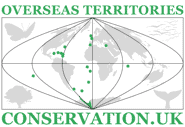Convention on Migratory Species
As an environmental treaty under the auspices of the United Nations Environment Programme, the Convention on the Conservation of Migratory Species of Wild Animals (CMS) provides a global platform for the conservation and sustainable use of migratory animals and their habitats. CMS brings together the States through which migratory animals pass (the Range States) and lays the legal foundation for internationally coordinated conservation measures throughout a migratory range.
As the only global convention specialising in the conservation of migratory species, their habitats and migration routes, CMS complements and co-operates with a number of other international organizations, NGOs and partners in the media as well as in the corporate sector.
Migratory species threatened with extinction are listed on Appendix I of the Convention. CMS Parties strive towards strictly protecting these animals, conserving or restoring the places where they live, mitigating obstacles to migration and controlling other factors that might endanger them. Besides establishing obligations for each State joining the Convention, CMS promotes concerted action among the Range States of many of these species.
Migratory species that need or would significantly benefit from international co-operation are listed in Appendix II of the Convention. For this reason, the Convention encourages the Range States to conclude global or regional agreements. In this respect, CMS acts as a framework Convention. The agreements may range from legally binding treaties called Agreements, such as the Agreement on the Conservation of Albatrosses and Petrels (ACAP), to less formal instruments, such as Memoranda of Understanding (MOU) e.g. the MOU on the Conservation of Migratory Sharks, and can be adapted to the requirements of particular regions. The development of models tailored according to the conservation needs throughout the migratory range is a unique capacity to CMS. The information on which international environmental agreements have been extended to which UK territories has been updated in this web-site.
All of the UK Overseas Territories and Crown Dependencies are covered by the CMS, with the exception of Anguilla and British Antarctic Territory. CMS listed species found in the UKOTs include all of the marine turtle species that nest and/or forage on and around a number of territories, such as Ascension Island that hosts the second largest green turtle nesting population in the Atlantic Ocean. The waters around the UKOTs are also important for a number of migratory marine mammals, sharks and seabirds, with the land also supporting nesting of numerous land- and seabirds. The UK ratified ACAP in 2004, including on behalf of the South Atlantic UKOTs where 12 of the 31 species of albatross and petrel breed. The plan for implementing ACAP-related work at South Georgia & the South Sandwich Islands can be viewed here.
